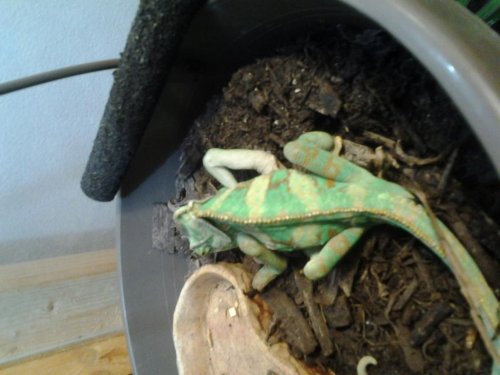Brad Ramsey
Retired Moderator
Not exactly a timely topic (it being summer) but it's one that I have been thinking about for a few months, and plan to do some careful experimentation with this winter.
I have reason to believe that veiled chameleons do possibly need a period of brumation.
Temperatures in the winter in their natural habitat do approach and often reach freezing. In reported expeditions at those times, chameleons were not found. It is believed (possibly observed, but I have no substantial info) that they go down from the trees and seek out protected areas in rock crevices, etc.
I think this could explain a lot in regard to lethargy at certain times of the year and also "hunger strikes".
I am curious to find out if actually decreasing temps and stopping food availability for 2 or 3 months would be beneficial in any way.
This period would occur during the shortest daylight hours of the year, possibly the end of October through December.
Still working on the scope of my actual practical experiment. I am a little nervous about creating conditions that would be too extreme.
Anyway ... it will be the subject of a future article.
Any thoughts?
-Brad
I have reason to believe that veiled chameleons do possibly need a period of brumation.
Temperatures in the winter in their natural habitat do approach and often reach freezing. In reported expeditions at those times, chameleons were not found. It is believed (possibly observed, but I have no substantial info) that they go down from the trees and seek out protected areas in rock crevices, etc.
I think this could explain a lot in regard to lethargy at certain times of the year and also "hunger strikes".
I am curious to find out if actually decreasing temps and stopping food availability for 2 or 3 months would be beneficial in any way.
This period would occur during the shortest daylight hours of the year, possibly the end of October through December.
Still working on the scope of my actual practical experiment. I am a little nervous about creating conditions that would be too extreme.
Anyway ... it will be the subject of a future article.
Any thoughts?
-Brad





